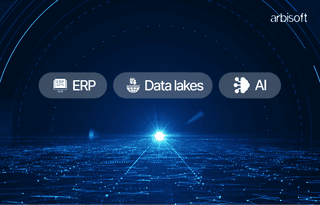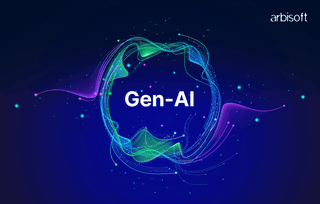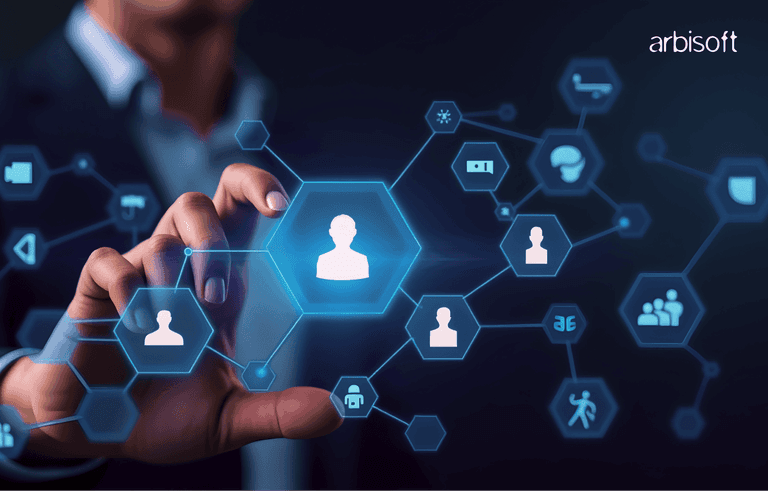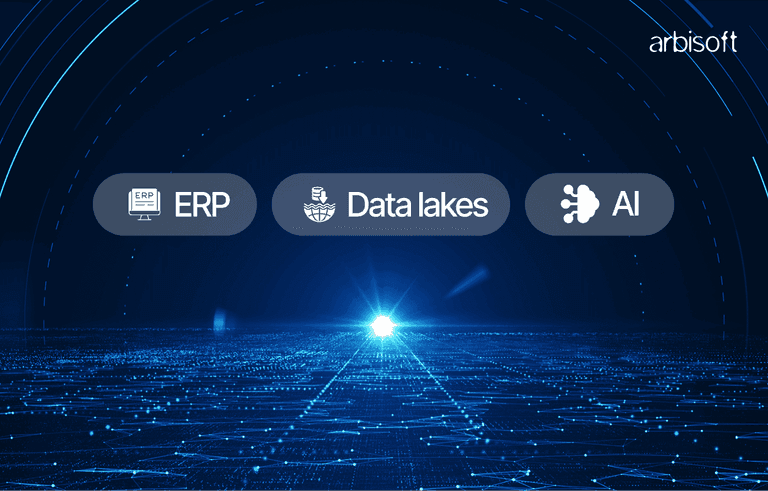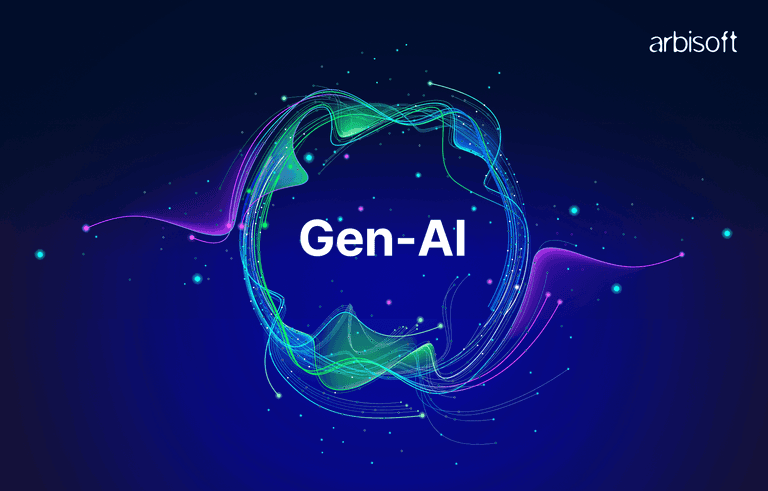We put excellence, value and quality above all - and it shows




A Technology Partnership That Goes Beyond Code

“Arbisoft has been my most trusted technology partner for now over 15 years. Arbisoft has very unique methods of recruiting and training, and the results demonstrate that. They have great teams, great positive attitudes and great communication.”
How Do AI Agents Work? A Technical Breakdown of Their Architecture

In 2025, the global AI market is expected to hit a staggering $190 billion, and AI agents—those smart, autonomous systems that learn, reason, and act—are at the heart of this revolution. AI agents automate processes and are like digital helpers that can see, think, and act on their own. They’re not just chatbots or voice assistants—they’re systems that learn from their surroundings, make decisions, and get things done without needing constant human input.
Ever wondered how these AI agents actually work? What makes them so smart? In this blog, we’ll break it all down for you—no complicated tech talk, just simple explanations. We’ll explore how they’re built, what’s trending right now, and what exciting changes are coming.
Here’s a stat to chew on:
30% of enterprises will use AI-powered agents to automate complex processes in 2025. - Gartner
So, buckle up. By the end of this blog, you’ll not only understand how AI agents work but also why they’re one of the most exciting innovations of our time.
The Evolution of AI Agents
AI agents have come a long way since their early days. In the beginning, they were simple rule-based systems—think of them as robots that followed strict "if this, then that" instructions. For instance, a thermostat that turns on the heater when the room gets cold. These systems were helpful but limited. They couldn’t learn or adapt on their own.
Then came machine learning, and everything changed. AI agents started learning from data, making predictions, and improving over time.

Looking back, each innovation has built on the last.
And let’s not forget personalization. AI agents are getting better at understanding individual preferences, whether it’s curating your Netflix playlist or tailoring your shopping experience.
Struggling to choose the best tools for your AI agent? Get our AI Agent Tech Stack Cheat Sheet—a handy, expert-curated sheet to help you make faster, smarter decisions for your AI projects!

Want to build smarter, more efficient AI agents but unsure which technologies to use? Get this AI Agent Tech Stack Sheet to choose the right AI Stack for your needs!

Technical Architecture of AI Agents
The intelligence of AI agents comes from a well-structured architecture. Let’s break it down into simple, bite-sized pieces to understand how they work under the hood.
Core Components
1. Perception Module
This is where the AI agent takes in information from the world. It uses:
- Sensors and Cameras - To see, hear, and sense its environment (think of a self-driving car detecting pedestrians).
- Data Inputs - Like text, images, or voice commands.
- Advanced Tools - Computer vision is used to recognize objects, NLP is used to understand language, and speech recognition is used to process voice inputs.
For example, when you ask Alexa to play a song, the perception module hears your voice and converts it into text.
2. Reasoning Engine
Once the AI agent has the data, it needs to make sense of it. This is where the reasoning engine comes in. It uses:
- Machine Learning Models - Like deep learning and reinforcement learning, to analyze data and make predictions.
- Knowledge Graphs - To connect ideas and make smarter decisions (e.g., understanding that "rain" means you might need an umbrella).
- Symbolic AI - For logical reasoning, like solving puzzles or following rules.
For instance, Netflix’s recommendation system uses reasoning to suggest shows you’ll love based on your watching patterns.
3. Action Module
After thinking, the AI agent needs to act. This module handles:
- Actuators - Physical actions, like a robot arm picking up an object.
- APIs - Digital actions, like sending a notification or placing an order.
- Integration - Connecting with external systems, such as chatbots responding to customer queries or smart home devices adjusting the thermostat. Think IoT.
Now this one has a fancy example - when your smart fridge notices you’re out of milk, the action module orders it for you.
4. Learning and Adaptation
AI agents don’t stay static—they learn and improve over time. This happens through:
- Feedback Loops - Learning from mistakes and successes (e.g., a chatbot improving its responses based on user feedback).
- Federated Learning - Training on decentralized data without compromising privacy (think of your smartphone improving its predictive text without sending your data to the cloud).
In 2025, 70% of A1000 enterprises will use continuous learning to keep their AI systems up-to-date. IDC
Data Flow and Processing
Here’s how data moves through an AI agent:
- Input - The perception module collects data (e.g., a voice command or sensor reading).
- Processing - The reasoning engine analyzes the data and decides what to do.
- Output - The action module executes the decision (e.g., playing a song or turning on a light).
- Learning - The system learns from the outcome to improve future performance.

Key Technologies Powering AI Agents
AI agents are only as powerful as the technologies behind them. Let’s dive into the key tools and innovations that make these systems so smart—and why they’re shaping the future.
1. Machine Learning and Deep Learning
These are the backbone of AI agents. They enable systems to learn from data and make decisions. Here’s how:
- Transformer Models - Think of GPT (used in ChatGPT) and BERT. These models are revolutionizing natural language tasks, like understanding and generating human-like text. That is why chatbots can have conversations that feel almost real.
- Reinforcement Learning - This is how AI agents learn by trial and error. For example, it’s what helps a self-driving car figure out the best way to navigate traffic.
In 2025, 80% of AI systems will rely on deep learning models, making them even more accurate and efficient. - Gartner
2. Natural Language Processing (NLP)
NLP is what lets AI agents understand and interact with humans. NLP helps with:
- Chatbots - Like the ones helping you on e-commerce sites.
- Voice Assistants - Like Siri and Alexa, which understand your voice commands.
- Translation Tools - Like Google Translate, which breaks language barriers.
The NLP market is expected to grow to $43 billion in 2025, driven by AI agents. - MarketsandMarkets
3. Computer Vision
This technology lets AI agents "see" and interpret visual data. It’s used in:
- Autonomous Vehicles - To detect pedestrians, read road signs, and avoid accidents.
- Healthcare - To analyze medical images, like X-rays and MRIs, for faster diagnoses.
- Surveillance - To identify suspicious activities in real-time.
For example, computer vision is what lets your phone unlock using facial recognition.
4. Edge AI
Edge AI is all about speed and efficiency. Instead of sending data to the cloud for processing, AI agents handle it locally—on your device. This is crucial for:
- Real-Time Decisions - Like a smart security camera detecting an intruder instantly.
- Privacy - Keeping sensitive data, like health records, on the device instead of the cloud.
Challenges and Considerations
AI agents are powerful, but they’re not perfect. As they become more integrated into our lives, we need to address the challenges they bring—both technical and ethical. Let’s break it down.
Technical Challenges
Even the smartest AI agents face hurdles. Here are the big ones:
- Scalability - As AI systems grow, they need to handle more data and more users without slowing down. Think of a popular app crashing because too many people are using it at once.
- Real-Time Processing - AI agents often need to make split-second decisions, like a self-driving car avoiding an accident. Delays can be dangerous.
- Data Privacy - AI agents rely on data, but that data often includes sensitive information. Keeping it secure is a top priority.
AI agents need to work well in unpredictable environments. For instance, a delivery drone should be able to handle windy weather.
Ethical Concerns
AI agents are only as good as the data they’re trained on—and that can lead to problems. Here’s what we need to watch out for:
- Bias in AI Decision-Making - If an AI agent is trained on biased data, it can make unfair decisions. For example, a hiring AI might favor one group over another.
75% of organizations are concerned about AI ethics, but only 25% have a framework in place. - Deloitte
- Explainable AI (XAI) - People want to know how AI agents make decisions. If a loan application is rejected by an AI, the applicant deserves to know why.
- Regulatory Compliance - Governments are starting to set rules for AI use. Companies need to ensure their AI agents follow these guidelines.
What to Expect in The Future
With time, these systems will be smarter, faster, and more integrated into our lives than ever before. Let’s explore what’s coming.
- Quantum Computing - This allows solving complex problems in seconds instead of hours. Quantum computing will supercharge AI agents (we’re already seeing this with Microsoft’s Majorana 1), making them faster and more powerful.
- Self-Supervised Learning - AI agents will learn from data without needing as much human input. This means they’ll get smarter on their own, like a student who teaches themselves.
- Creative Tasks - AI agents will help writers, designers, and artists brainstorm ideas and refine their work.
- Strategic Tasks - They’ll assist business leaders by analyzing data, predicting trends, and suggesting strategies.
The AI agent market is expected to grow at a CAGR of 37% from 2021 to 2025. - Statista
This means that in 2025, AI agents will be a $50 billion industry, driving innovation and creating new opportunities. There is a lot to look forward to!
Parting Thoughts
From their technical architecture (perception, reasoning, action, and learning) to the cutting-edge technologies powering them (like machine learning, NLP, and edge AI), these systems are smarter and more capable now. They’re already improving industries, from healthcare and finance to retail and autonomous vehicles, and they’ll be even more integrated into our daily lives.
But it’s not all smooth sailing. Challenges like scalability, data privacy, and ethical concerns need to be addressed. The good news? The future looks bright. With advancements in quantum computing, self-supervised learning, and human-AI collaboration, AI agents are set to become our most powerful tools and partners.
In 2025, the AI agent market is expected to grow at a 37% annual rate (Statista), reaching a whopping $50 billion. These systems will not only make our lives easier but also open doors to possibilities we can’t yet imagine. The future isn’t just about AI—it’s about AI and humans working together to create a smarter, more connected world.
So, whether you’re ready to adopt AI agents or just curious about their potential, one thing’s clear - the future is intelligent, and it’s getting very clear.









